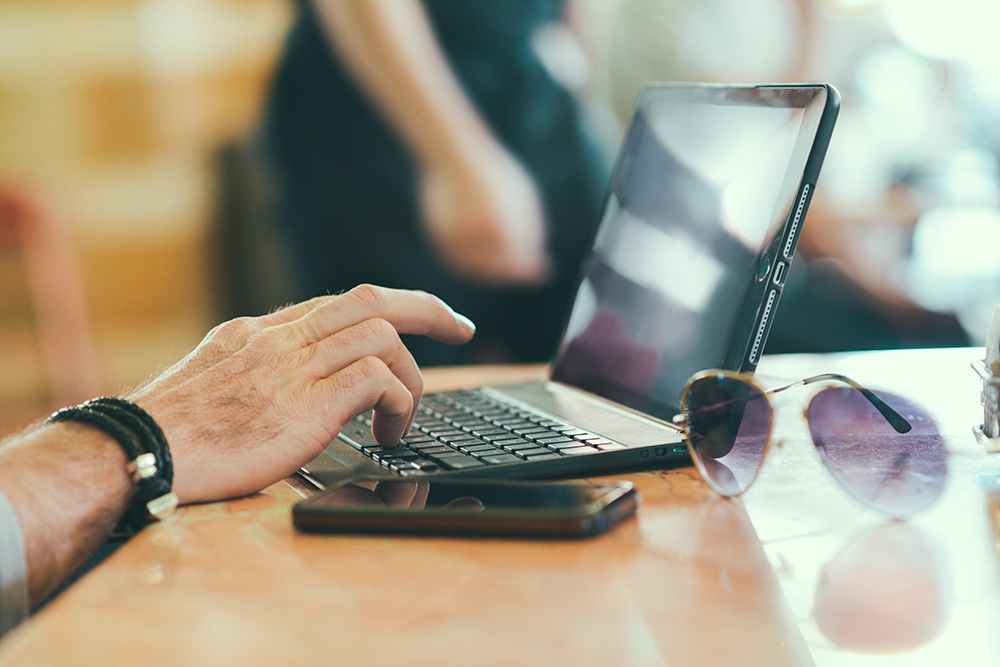Batteries are designed to last a certain number of charge cycles. (A charge cycle would be taking the battery from 100% to 0%, and taking the battery from 100% to 50% would count as 0.5 charge cycles.) As you use up charge cycles—and they are measured in the hundreds—your battery capacity decreases.
Here are some tips to reduce the drain on your battery to keep it working all day and for a long time to come.
Set your power settings to the “Power Saver” setting. This will adjust your screen brightness, auto-dim, sleep, and hibernation settings to extend your battery life. Click on the battery icon in the bottom left of your screen to find this setting.
Dim your screen. The display is your biggest energy drain. The brighter your screen is, the faster your battery depletes. Some laptops have keyboard buttons for this and for others you can find it in the advanced power settings.
Adjust hibernation mode. There’s no sense in your computer running if you’re not using it. By adjusting your sleep or hibernation mode to engage in a shorter timeframe of inactivity you’ll save big on battery life. This is also found in the advanced power settings.
Turn off Bluetooth and Wi-Fi. These two are notorious energy drains. If you aren’t using them, turn them off.
Quit and disable unused apps. Do you have any apps running in the background that you aren’t using? You may not even know about them—they automatically start when you computer boots up and the run hidden in the background until you use them. You can view these in the task manager. Press [CTRL] + [ALT] + [DELETE] to open the task manager, or type in “task manager” in the Windows search bar. You’ll be able to see a list of running applications and processes. Disable them by right clicking on the item and selecting properties. From there you can disable it on start-up. Remember to only edit programs you know. Never edit a program or process that you do not recognize.
Keep it cool. Temperatures greater than 95°F can permanently damage your battery. If your battery feels hot, remove it from the laptop and let it cool down. Always keep your laptop on a hard flat surface so it can breathe. When you use your laptop in your lap or it’s laying on a couch or pillow the cooling vents become blocked causing your laptop to overheat. This can lead to hardware failures other than just your battery so always keep your laptop cool.

But too cold isn’t good either. Freezing temperatures can permanently kill your battery.
Update your software. Developers often make their software more energy efficient as they roll out updates.
The Battery Itself
Recalibrate your battery. After a long time your battery can stop truly charging to 100% (even though it may indicate that it is). To recalibrate your battery and get it back to full capacity, first charge it to 100%. Next use your computer until the battery reaches 5%. Now stop using it and charge it to 100%. Your battery is now recalibrated.
Never discharge your battery to 0%. The battery will struggle to regain a full charge.
Keep your battery in the sweet spot. 100% is actually not an ideal charge state for your battery. Operating your battery between 40% and 80% will prolong its life over the long-term.
Use your laptop frequently. Batteries work best when they are used. They aren’t designed to be dormant for long periods of time.
Store at a 40% charge level. If you do store your laptop for a period of time, charge the battery to 40% capacity. Storing at extreme ends of the charge spectrum can lead to permanent capacity losses.
Advanced
Defragment your hard drive. When you defragment your hard drive, data is rearranged on the disk in a more efficient manner. Your hard drive will spin less, saving energy. Plus it will retrieve data faster. A win-win.
Install an SSD. Solid-state drives (SSDs) have no moving parts which means less energy consumption. They’re over 3X faster than traditional hard drives, too. They cost less than $100 and all you need to install one is a table to set your laptop on, a screwdriver, and a cheap cable to transfer the data.

